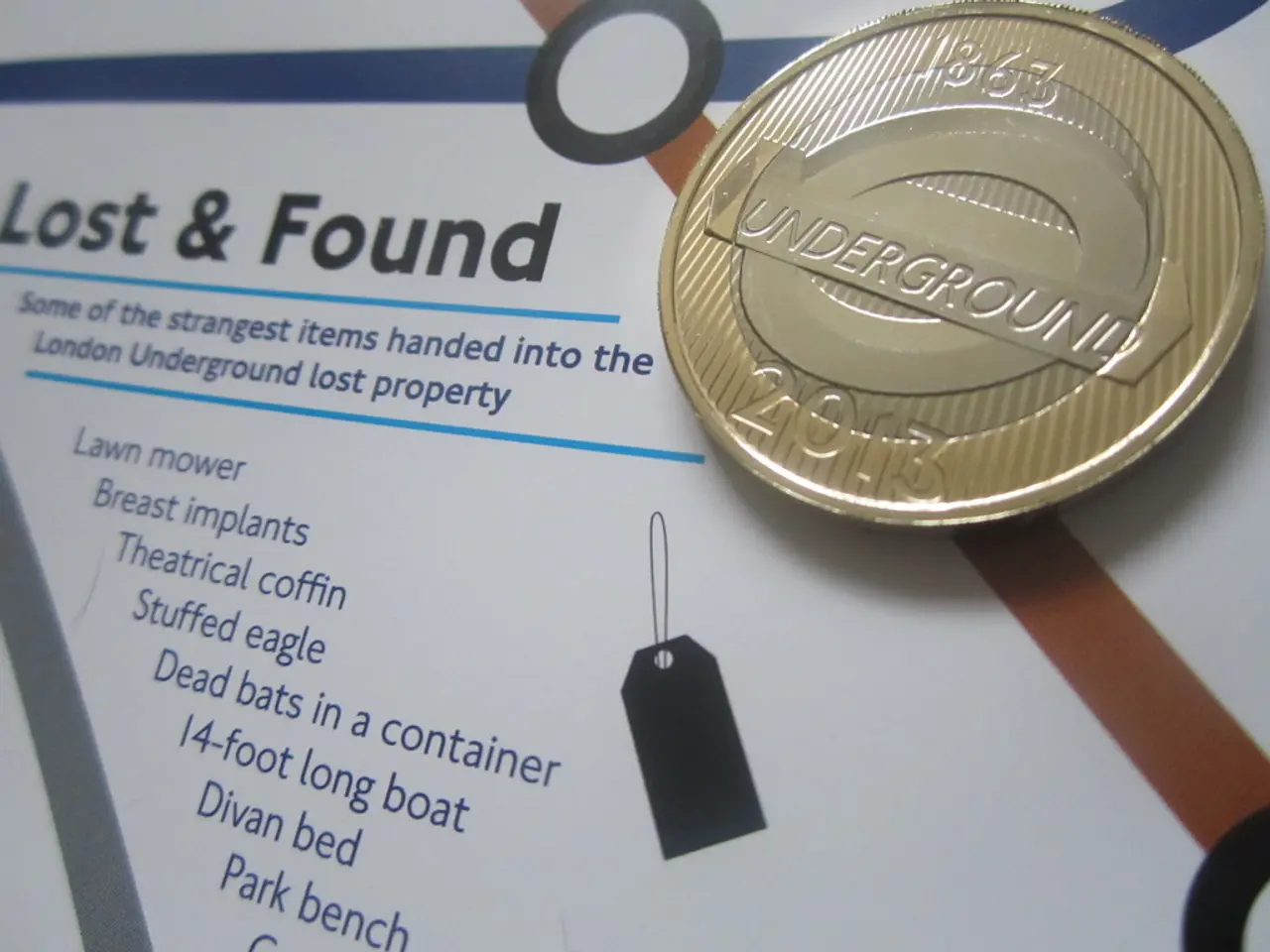Tactics in Times of Volatility
In today's fast-paced and ever-changing business landscape, traditional strategies and methods are no longer sufficient. Companies must adapt to short-cycle projects, test, learn, and evolve to thrive in this dynamic environment [1]. This shift is crucial as the traditional corporate strategy, which treats strategy like managing an investment, is less effective in today's uncertain world [2].
Recognising strategy as a creative exercise is vital, and organisations should adopt a comprehensive, flexible, and proactive approach to managing uncertainty. This approach combines risk identification, scenario planning, agile decision-making, and financial resilience [3].
Establishing a Risk Committee is a key element of this strategy. This dedicated group of company leaders identifies key risks, monitors external changes, and updates mitigation plans regularly. They play a critical role in scenario analysis and contingency planning, ensuring the company stays prepared to respond quickly to emerging threats or opportunities [1].
Scenario planning is another essential tool. By developing a range of plausible future scenarios, organisations can prepare for multiple futures, testing these using tools such as SWOT analysis and predictive modeling software [2]. Each scenario requires adaptive, flexible strategies that can be scaled or modified as conditions change, enabling the organisation to pivot efficiently when needed.
Agile decision-making and operational flexibility are also crucial. Decision-making processes should be streamlined, empowering frontline employees to make real-time decisions that protect revenues and respond to customer needs quickly [1]. Agile operations and timely access to current data are essential for managing uncertainty effectively, especially during rapidly changing market conditions.
Strengthening financial position and liquidity management is equally important. Maintaining a well-capitalised balance sheet with sufficient liquidity to cover fixed obligations and enable strategic investments despite volatility is vital [3]. Closely evaluating liquidity, cash conversion cycles, debt, and working capital supports resilience and agility.
Adopting a balanced and opportunity-driven adaptation approach is the final piece of the puzzle. This involves implementing a strategy that combines targeted actions to mitigate critical risks with broader organisation-wide resilience-building measures [4]. Focusing on "risk hotspots" while also promoting innovation and investment in new growth opportunities emerging from uncertainty helps maintain operational continuity and leverages uncertainty as a source of competitive advantage.
In conclusion, these practices enable businesses to anticipate, prepare for, and adapt to changing environments dynamically, improving long-term resilience and positioning the company to capitalise on emerging opportunities amidst uncertainty. Leaders trained to manage uncertainties can lead their organisations to a new growth path [5].
As companies seek tools to manage continuous uncertainty, leaders face a need to act quickly and be cautious in the face of uncertainty in the new normal [6]. Understanding an individual's ability to cope with uncertainty is important when devising a new strategy [7]. Today's organisations should empower their people to solve problems rather than give them directions [8].
In a dynamic environment, organisations require new tools for growth, change, and transformation [9]. Dynamic situations and uncertainties can generate new opportunities [10]. Five questions are suggested to help leaders achieve growth amid uncertainty [11]. Leaders need to be trained in reframing uncertainty, preparing the organisation, applying the right practices, and sustaining themselves emotionally [12].
Many companies are switching to the implementation of Agile [13], which emphasises flexibility, fast feedback, and continuous improvement. However, the managers' decisions across units based on business opportunities are less efficient in managing early-stage opportunities [14].
In the first part of this series, we discussed the concept of strategic decision making under uncertainty and the different types of uncertainty [15]. In the following articles, we will delve deeper into each of these elements, providing practical tips and insights for navigating uncertainty and thriving in today's dynamic business environment.
References: [1] McKinsey & Company. (2021). Agile strategy: How to adapt and thrive in a fast-changing world. Retrieved from https://www.mckinsey.com/business-functions/strategy-and-corporate-finance/our-insights/agile-strategy-how-to-adapt-and-thrive-in-a-fast-changing-world [2] PwC. (2021). Strategy in a volatile world: The five practices of agile strategy. Retrieved from https://www.pwc.com/gx/en/services/advisory/strategy/strategy-in-a-volatile-world.html [3] Deloitte. (2020). Agile finance: Navigating a volatile business environment. Retrieved from https://www2.deloitte.com/content/dam/Deloitte/us/Documents/about-deloitte/us-consulting-agile-finance-navigating-a-volatile-business-environment.pdf [4] KPMG. (2020). Agile strategy: Embracing uncertainty to create opportunity. Retrieved from https://home.kpmg/us/en/home/insights/2020/09/agile-strategy-embracing-uncertainty-to-create-opportunity.html [5] Harvard Business Review. (2021). How to Lead a Company Through Uncertainty. Retrieved from https://hbr.org/2021/03/how-to-lead-a-company-through-uncertainty [6] Forbes. (2020). Leading Through Uncertainty: 5 Key Steps. Retrieved from https://www.forbes.com/sites/forbescoaches council/2020/04/06/leading-through-uncertainty-5-key-steps/?sh=3331b7013e5d [7] HBR Ascend. (2020). How to Lead Yourself and Your Team Through Uncertainty. Retrieved from https://hbrascend.org/2020/04/how-to-lead-yourself-and-your-team-through-uncertainty [8] Fast Company. (2020). How to lead in a crisis: Empower your people to solve problems. Retrieved from https://www.fastcompany.com/90462826/how-to-lead-in-a-crisis-empower-your-people-to-solve-problems [9] McKinsey & Company. (2020). Navigating uncertainty: How leaders can prepare for a volatile and complex world. Retrieved from https://www.mckinsey.com/business-functions/organization/our-insights/navigating-uncertainty-how-leaders-can-prepare-for-a-volatile-and-complex-world [10] Harvard Business Review. (2020). How to Thrive in Uncertainty: Make the Most of a Volatile Business Environment. Retrieved from https://hbr.org/2020/06/how-to-thrive-in-uncertainty-make-the-most-of-a-volatile-business-environment [11] Deloitte. (2020). Five questions to help leaders navigate uncertainty. Retrieved from https://www2.deloitte.com/content/dam/Deloitte/us/Documents/about-deloitte/us-consulting-five-questions-to-help-leaders-navigate-uncertainty.pdf [12] KPMG. (2020). Agile leadership: Navigating uncertainty to drive growth. Retrieved from https://home.kpmg/us/en/home/insights/2020/09/agile-leadership-navigating-uncertainty-to-drive-growth.html [13] Accenture. (2020). Agile transformation: Embracing change to drive growth. Retrieved from https://www.accenture.com/us-en/insights/agile-transformation [14] McKinsey & Company. (2020). Agile strategy: How to adapt and thrive in a fast-changing world. Retrieved from https://www.mckinsey.com/business-functions/strategy-and-corporate-finance/our-insights/agile-strategy-how-to-adapt-and-thrive-in-a-fast-changing-world [15] HBR Ascend. (2020). How to Lead Yourself and Your Team Through Uncertainty. Retrieved from https://hbrascend.org/2020/04/how-to-lead-yourself-and-your-team-through-uncertainty
In light of the volatile business landscape, finance and business strategies should be adaptive and proactive. This means incorporating risk identification, scenario planning, agile decision-making, and financial resilience to manage uncertainty effectively.
Moreover, leaders should establish a Risk Committee and empower their people to solve problems, fostering an organizational culture that promotes innovation, change, and transformation, while leveraging uncertainty as a source of competitive advantage.




